Hummingbirds are magical creatures. Their vibrant colors and quick movements bring life to any garden. But what if your garden is mostly shaded? Don’t worry! You can still create a beautiful space that attracts these tiny birds. With the right plants and design, your shade garden can become a hummingbird paradise.
In this guide, we’ll show you how to build a shade garden specifically for hummingbirds. You’ll learn about the best plants, design tips, and maintenance practices. Let’s get started!
Why Hummingbirds Love Shade Gardens
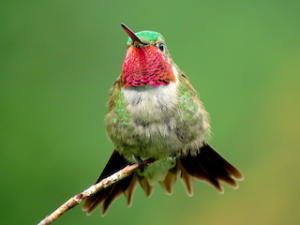
Hummingbirds need food, shelter, and water to thrive. While they often visit sunny gardens, shaded areas can also meet their needs. Shade gardens provide cool resting spots during hot days. They also offer protection from predators.
Moreover, many shade-loving plants produce nectar-rich flowers. These flowers are perfect for attracting hummingbirds. With careful planning, your shaded space can become a haven for these delightful birds.
Benefits of Shade Gardens
-
Cooler Temperatures: Shade provides relief from the heat, which is essential for hummingbirds during the summer.
-
Moisture Retention: Shaded areas tend to retain moisture better, reducing the need for frequent watering.
-
Predator Protection: Dense foliage in shade gardens offers hiding spots from predators.Understanding Hummingbird Behavior
Hummingbirds are attracted to bright colors, especially red, orange, and pink. They also prefer tubular flowers that allow them to easily access nectar. By incorporating these elements into your garden, you can attract hummingbirds even in shaded areas.
|
Connect with nature. Support local wildlife. Bring your backyard to life.Whether you are designing a hummingbird haven in your backyard, bringing some life to your apartment window, or just learning about the wild world around you, Attracting Hummingbirds will help you in the first days of planning and as your experience and curiosity grow. Follow along as we discover…
|
VIDEO: Creating a Shade Garden for Hummingbirds: A Complete Guide Create a hummingbird-friendly shade garden with expert tips on plants, design, and maintenance. You can’t miss with our comprehensive guide!
Best Plants for a Hummingbird Shade Garden
The key to attracting hummingbirds is choosing the right plants. Many shade-tolerant species produce nectar-rich blooms that hummingbirds love. Below are some of the best options.
Shade-Loving Nectar Plants
-
Cardinal Flower (Lobelia cardinalis)
This plant thrives in partial shade. Its bright red blooms are irresistible to hummingbirds. Cardinal flowers grow up to 4 feet tall, making them a great choice for adding height to your garden. -
Columbine (Aquilegia)
Columbine flowers have unique shapes that attract hummingbirds. They come in various colors like red, pink, and yellow. These plants are relatively low-maintenance and bloom in early spring. -
Coral Bells (Heuchera)
Coral bells are low-maintenance plants with small bell-shaped flowers. They grow well in shaded areas and add a pop of color with their vibrant foliage. -
Foxglove (Digitalis)
Foxglove produces tall spikes of tubular flowers. These are perfect for hummingbirds to feed on. However, be cautious as foxglove can be toxic to pets and humans if ingested. -
Bleeding Heart (Dicentra)
This plant has heart-shaped flowers that dangle gracefully from arching stems. It’s ideal for shady spots and blooms in late spring.
Shrubs for Structure and Nectar
Shrubs add height and structure to your garden. Some also produce nectar-rich flowers that hummingbirds enjoy.
-
Rhododendron: These shrubs bloom in spring with large clusters of colorful flowers. They thrive in partial shade and can grow quite large, providing excellent shelter.
-
Azalea: Azaleas are closely related to rhododendrons but have smaller leaves and blooms. They are perfect for adding vibrant colors to your shaded garden.
-
Serviceberry (Amelanchier): This native shrub produces white flowers in spring and berries in summer. It provides a source of food for hummingbirds and other wildlife.
By combining flowering plants with shrubs, you create a layered garden that appeals to hummingbirds.
Do you ever dream of having a beautiful shade garden all year-round, even if you have never gardened before? Then perennials, bulbs, flowering bushes and trees create your easy solution!
This is the book for you! In one place you will find step-by-step directions to designing, preparing, and growing a garden quickly and easily with very little work. Enjoy over 201 color photos of flowers and their detailed descriptions in this 8-1/2″ X 11″ paperback book.
You may think that flowers will not bloom in the shade and that a fabulous garden requires hours of work a week, with lots of time spent weeding and watering.
 |
Designing Your Hummingbird Shade Garden
A well-designed garden attracts more birds. Here’s how to plan your layout effectively.
Create Layers
Layering adds depth and variety to your garden. It also provides different feeding and perching options for hummingbirds.
-
Start with a canopy layer using small trees or tall shrubs like serviceberry or dogwood.
-
Add an understory layer with medium-sized shrubs such as azaleas or rhododendrons.
-
Finish with ground cover plants like coral bells or ferns.
This structure mimics natural habitats where hummingbirds feel safe and comfortable.
Incorporate Flight Paths
Hummingbirds need space to fly between feeding spots. Leave open areas between plant clusters to allow easy movement. This will encourage them to explore your garden more thoroughly.
Add Water Features
Hummingbirds love water! A small fountain or birdbath can make your garden even more inviting. Choose one with shallow edges so they can perch while drinking or bathing. Change the water frequently to keep it clean and free of bacteria.
In addition to nectar, hummingbirds need water and safe spaces to rest. By providing a birdbath or misting system, you can ensure they have everything they need.
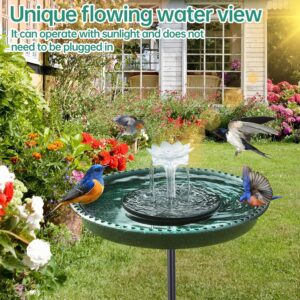
Water Sources
Hummingbirds enjoy fresh water to drink and bathe. A shallow birdbath with a fine spray from a mister is ideal. Just make sure the water is changed regularly to keep it clean.
Here’s a solar powered bird bath.
Hummingbird misters at Amazon.com
Use Bright Colors
Hummingbirds are drawn to red, orange, and pink flowers. Incorporate these colors throughout your garden for maximum attraction. You can also use bright-colored garden decorations or planters to enhance visual appeal.
Maintaining Your Hummingbird Shade Garden
Once your garden is set up, proper maintenance ensures it stays healthy and vibrant.
Watering
Shade gardens often retain moisture longer than sunny ones. However, you still need to water regularly during dry periods. Use mulch around plants to retain soil moisture and reduce evaporation. Organic mulch like wood chips or leaves also adds nutrients to the soil as it decomposes.
Pruning
Prune shrubs and trees as needed to maintain their shape. Deadhead spent flowers to encourage new blooms throughout the season. Pruning also helps control the spread of disease and pests.
Fertilizing
Feed your plants with organic fertilizers designed for flowering species. Avoid over-fertilizing as it can reduce flower production. Compost or well-rotted manure are excellent natural fertilizers that promote healthy plant growth.
Supplemental Feeding
While natural nectar is best, feeders provide an additional food source for hummingbirds. Place feeders near flowering plants for easy access. Clean them weekly to prevent mold or bacteria buildup. Mix 1 part sugar with 4 parts water for a homemade nectar solution—no food coloring needed!
One of the best Hummingbird feeders for your shade garden, that’s easy to take apart and clean is the HummZinger Ultra.
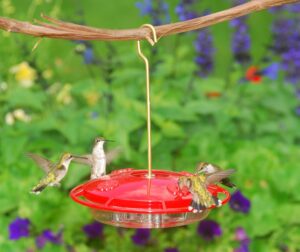
Aspects 12oz HummZinger Ultra With Nectar Guard.
The HummZinger Ultra 12oz Saucer Feeder is one of the best options for a hummingbird feeder that’s both easy to clean and maintain. This top-tier feeder features patented Nectar Guard tips—flexible membranes on the feeding ports that keep flying insects out while still allowing hummingbirds to feed freely. Plus, it comes with an integrated ant moat to prevent crawling insects from reaching the nectar, and the raised flower ports help divert rain, keeping the nectar fresh.
With a 12 oz capacity, this mid-size feeder offers plenty of space and can be hung or mounted on a post using the included hardware. It has four feeding ports and is made from durable, unbreakable polycarbonate. Whether you’re concerned about bees, wasps, or ants, this feeder is built for easy cleaning and insect protection.
Overcoming Common Challenges
Shade gardening comes with unique challenges, but they’re easy to overcome with the right strategies.
Limited Light
Shaded areas receive less sunlight, which can impact plant growth. To maximize light:
-
Position plants where they get dappled sunlight.
-
Use reflective surfaces like light-colored mulch.
-
Prune overhanging branches to let more light through.
Moisture Issues
Shaded gardens often have higher humidity levels, leading to fungal problems. To prevent this:
-
Space plants apart for better air circulation.
-
Water early in the morning so foliage dries quickly.
-
Choose disease-resistant plant varieties when possible.
By addressing these challenges proactively, you’ll ensure your garden thrives year-round.
Creating a Year-Round Habitat
Hummingbirds migrate seasonally but providing year-round resources keeps them coming back.
Seasonal Plant Selection
Choose plants that bloom at different times of the year:
-
Spring: Columbine and bleeding heart
-
Summer: Cardinal flower and foxglove
-
Fall: Late-blooming azaleas
-
Winter: Evergreen shrubs for shelter
This ensures there’s always something blooming in your garden.
Shelter and Nesting Sites
Dense shrubs and small trees offer excellent shelter from predators and weather. You can also hang small nesting platforms designed for hummingbirds near quiet corners of your garden. These platforms provide a safe place for hummingbirds to nest and raise their young.
Why Hummingbirds Might Use a Nesting Platform
Although they don’t use traditional houses, hummingbirds may be more inclined to use a nesting platform. A platform is simply a flat surface,  often mounted in a tree or on a pole, that offers a secure, open space for them to build their nests. The key difference between a house and a platform is that a platform doesn’t enclose the bird. It still has the freedom to come and go as needed.
often mounted in a tree or on a pole, that offers a secure, open space for them to build their nests. The key difference between a house and a platform is that a platform doesn’t enclose the bird. It still has the freedom to come and go as needed.
A hummingbird nesting platform is the closest thing you can get to a hummingbird house. It provides the same function of bringing the hummingbirds in close where you can watch them nesting and raising their young. It can be a great option for attracting hummingbirds. The nesting platform provides the safety of a stable, elevated surface while still allowing access to food and open space. Some birdwatchers create specialized platforms with small divots to simulate a suitable location for a nest. You can place these nesting platforms near abundant nectar sources, such as flowering plants or hummingbird feeders.That makes them even more appealing to hummingbirds looking for a convenient place to build their nests.
Frequently Asked Questions
How much shade is too much?
Hummingbirds prefer partial shade over deep shade. Aim for areas with 4–6 hours of filtered sunlight daily. This allows plants to thrive while still providing enough light for hummingbirds.
Can I use artificial nectar?
Yes! Feeders filled with homemade nectar are great supplements when flowers aren’t blooming. Just mix 1 part sugar with 4 parts water—no food coloring needed! Place feeders in visible spots to attract hummingbirds.
How do I protect hummingbirds from predators?
Provide dense shrubs for hiding spots and avoid placing feeders near open areas where predators can strike easily. Consider using predator guards on feeders for added protection.
What if I have pets?
If you have pets, ensure that your garden plants are non-toxic. Some plants like foxglove can be harmful if ingested. Keep an eye on your pets when they’re in the garden to prevent accidental ingestion.
Additional Tips for Success
Native Plants
Incorporate native plants into your garden. These plants are naturally adapted to your region’s climate and soil conditions, making them easier to maintain. They also support local wildlife, including hummingbirds.
Avoid Pesticides
Pesticides can harm hummingbirds and other beneficial insects. Instead, use natural pest control methods like attracting beneficial insects or using neem oil.
Create a Hummingbird-Friendly Neighborhood
Encourage your neighbors to create hummingbird-friendly gardens as well. This will create a network of habitats that support these birds throughout the year.
Conclusion
Creating a shade garden for hummingbirds is easier than you think! By selecting the right plants, designing a thoughtful layout, and maintaining your space carefully, you’ll attract these enchanting birds in no time.
Start small if you’re new to gardening—every step counts toward building a thriving habitat! Soon enough, you’ll enjoy watching hummingbirds flit around your shaded oasis all season long.
Happy gardening! 🌿
Final Thoughts
As you embark on this gardening journey, remember that every small change can make a big difference for hummingbirds. Whether you have a large yard or a small balcony, you can create a haven for these beautiful creatures. So, get planting, and let the hummingbirds bring joy and wonder to your outdoor space! 🌸🐦
Bonus Section: DIY Projects for Your Shade Garden
Building a Hummingbird Feeder
Creating a Hummingbird Nesting Platform
These DIY projects add a personal touch to your garden and provide essential resources for hummingbirds.
Final Checklist
Before you start your garden, make sure you have:
-
Shade-tolerant plants that attract hummingbirds
-
A well-designed layout with layers and open flight paths
-
Water features for drinking and bathing
-
Supplemental feeders for additional nutrition
-
Native plants to support local wildlife
-
Pest control methods that are safe for hummingbirds
With these elements in place, your shade garden will become a haven for hummingbirds and other wildlife. Enjoy the journey of creating this beautiful space! 🌿🐦
Additional Resources
For more information on gardening for hummingbirds, consider these resources:
-
Local Nurseries: Visit local nurseries for advice on native plants and gardening tips specific to your region.
-
Wildlife Conservation Websites: Websites like the Audubon Society offer valuable insights into creating wildlife-friendly gardens.
-
Gardening Books: Check out books on shade gardening and hummingbird-friendly plants for detailed guides and inspiration.
These resources will help you refine your gardening skills and create a thriving habitat for hummingbirds.
Here’s a great article that tells everything you need to know about how to choose the best place to hang your hummingbird feeder.
Here’s the best designed hummingbird feeder to use. It’s leak proof, so it won’t attract insects and it’s easy to take apart and clean.
Here’s a comprehensive guide to help you clean your hummingbird feeder for those times when the nectar is not changed soon enough and mold starts to grow.
Final Thoughts on Gardening for Hummingbirds
Gardening for hummingbirds is not just about creating a beautiful space; it’s also about supporting these incredible creatures and their habitats. By following the tips and strategies outlined in this guide, you’ll be contributing to the well-being of hummingbirds and enhancing your outdoor space at the same time.
So, take the first step today! Plant those flowers, hang that feeder, and watch your garden transform into a hummingbird haven. 🌸🐦
Conclusion to the Conclusion
In conclusion, creating a shade garden for hummingbirds is a rewarding experience that combines gardening with wildlife conservation. It’s a journey that requires patience, creativity, and a willingness to learn. With every plant you nurture and every bird you attract, you’re not just beautifying your garden—you’re also supporting the local ecosystem.
So, go ahead and get started! Your hummingbirds are waiting. 🌿🐦
Final, Final Thoughts
As you finish reading this guide, remember that gardening is a process. It involves trial and error, learning from mistakes, and enjoying the journey. Don’t be afraid to experiment with new plants or designs. And most importantly, have fun!
Your garden will evolve over time, and so will your connection with nature. Enjoy the journey, and happy gardening! 🌸🌻
The Very Last Word
Creating a shade garden for hummingbirds is a gift to both yourself and these beautiful birds. It’s a way to connect with nature, enhance your outdoor space, and contribute to the well-being of wildlife.
So, take a deep breath, step outside, and start planting! Your hummingbird garden awaits. 🌿🐦
And That’s a Wrap!
This concludes our comprehensive guide to creating a shade garden for hummingbirds. We hope you found it informative, engaging, and inspiring. Happy gardening, and we look forward to seeing your hummingbird haven thrive! 🌸🐦
One More Thing
Don’t forget to share your gardening journey with friends and family! Encourage them to create their own hummingbird-friendly gardens. Together, you can make a difference for these incredible creatures.
Thanks for reading, and happy gardening! 🌿🐦
The End
And that’s truly the end! We hope you enjoyed this guide and are ready to start your gardening adventure. Remember, every garden is unique, so don’t be afraid to add your personal touch.
Happy gardening, and we hope to see your beautiful hummingbird garden soon! 🌸🐦
Bonus: Gardening Journal
Consider keeping a gardening journal to track your progress, note what works and what doesn’t, and plan for future seasons. This will help you refine your gardening skills and ensure your garden remains a haven for hummingbirds year after year.
Final Bonus Tip
Lastly, enjoy the process! Gardening is a journey, not a destination. The joy of watching your garden grow and attract hummingbirds is what makes it all worthwhile.
So, take a moment to appreciate the beauty around you, and happy gardening! 🌿🐦
The Very Last Bonus
One final tip: Be patient. Gardening takes time, and attracting hummingbirds can take a few seasons. But with persistence and the right strategies, you’ll soon be enjoying the company of these beautiful birds in your garden.
Thanks again for reading, and we wish you all the best with your gardening endeavors! 🌸🐦
And Finally…
We hope this guide has inspired you to create a beautiful shade garden that attracts hummingbirds. Remember, every small step counts, and together we can make a difference for these incredible creatures.
Happy gardening, and thanks for joining us on this journey! 🌿🐦
The Final Goodbye
It’s time to say goodbye, but we hope you’ll stay in touch. Keep gardening, keep learning, and most importantly, keep enjoying the beauty of nature.
Thanks again, and happy gardening! 🌸🐦
One Last Time…
Before you go, take a moment to appreciate the beauty of nature and the joy of gardening. It’s a journey that brings us closer to the world around us and helps us connect with wildlife in meaningful ways.
Happy gardening, and we hope to see your garden thrive! 🌿🐦
The Very Last Goodbye
And that’s truly it! We hope you enjoyed this guide and are ready to start your gardening adventure. Remember, gardening is a journey, and every step counts.
Thanks for reading, and happy gardening! 🌸🐦
Final, Final Goodbye
It’s time to close this chapter, but we hope you’ll continue to explore the world of gardening and wildlife conservation. Every garden, no matter how small, can make a difference.
Happy gardening, and thanks again! 🌿🐦
The End of the End
And that’s truly the end! We hope you found this guide informative and inspiring. Remember, gardening is about growth—both for your plants and for you.
Thanks for joining us, and happy gardening! 🌸🐦
One More Final Thought
As you finish reading, take a moment to reflect on the journey of creating a shade garden for hummingbirds. It’s a journey of discovery, growth, and connection with nature.
Happy gardening, and we hope to see your garden flourish! 🌿🐦
The Last Word
Creating a shade garden for hummingbirds is a rewarding experience that combines beauty, wildlife conservation, and personal growth. It’s a journey worth taking, and we hope you’ll enjoy every step of the way.
Thanks for reading, and happy gardening! 🌸🐦
Final Reflection
As you begin your gardening journey, remember that every garden is unique. Don’t be afraid to experiment and add your personal touch. And most importantly, enjoy the process!
Happy gardening, and thanks again! 🌿🐦
The Very Last Reflection
Gardening for hummingbirds is not just about plants; it’s about creating a haven for these beautiful creatures. It’s a way to connect with nature and make a positive impact on your local ecosystem.
Thanks for joining us, and happy gardening! 🌸🐦
Final, Final Reflection
As you close this guide, take a moment to appreciate the beauty of nature and the joy of gardening. It’s a journey that brings us closer to the world around us and helps us connect
If you found this article helpful please share it with your friends using the social bookmarking buttons on the left side of this page. Help everyone to increase their enjoyment of feeding hummingbirds. Do it for the hummingbirds!

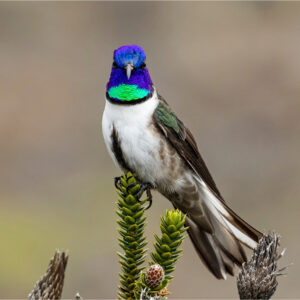
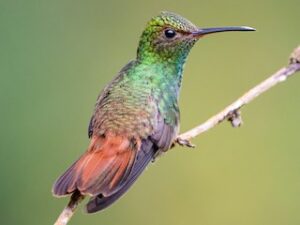

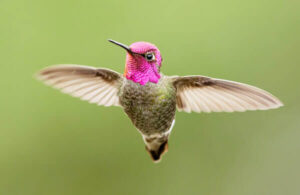
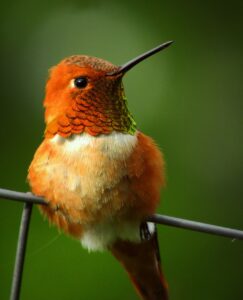
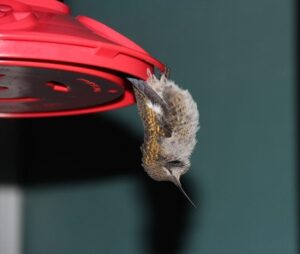
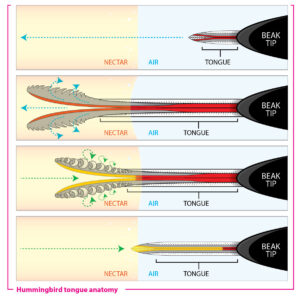
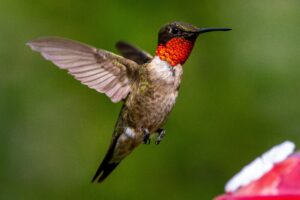
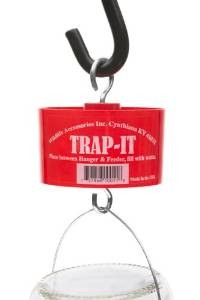

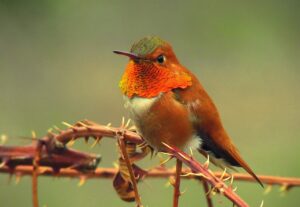
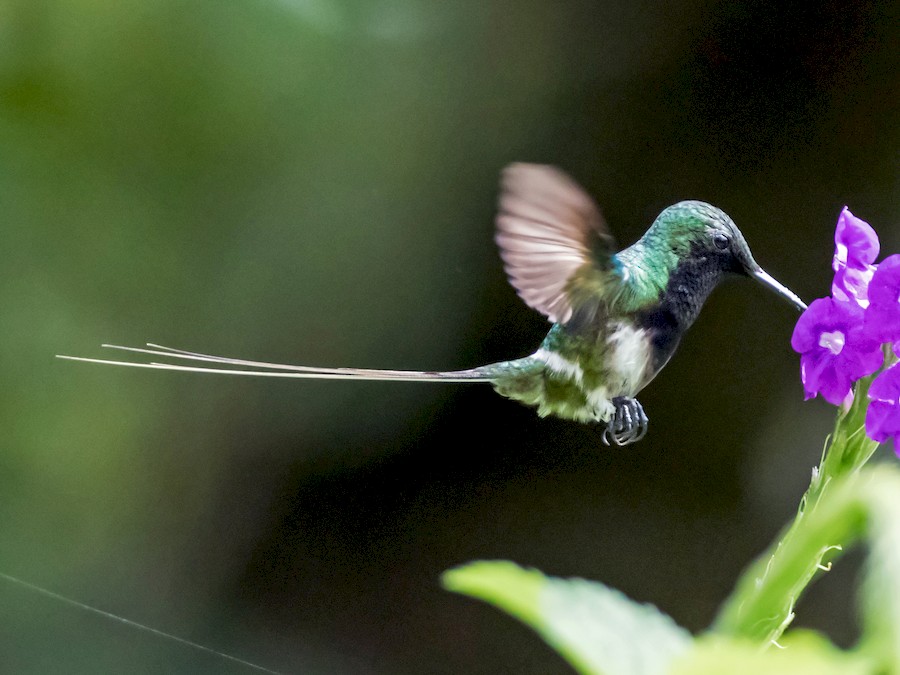 extraordinary hummingbird species captivates both casual observers and ornithologists alike with its striking appearance and remarkable adaptations. As one of nature’s most exquisite creations, the Black-bellied Thorntail showcases the incredible diversity and specialization found within the hummingbird family.
extraordinary hummingbird species captivates both casual observers and ornithologists alike with its striking appearance and remarkable adaptations. As one of nature’s most exquisite creations, the Black-bellied Thorntail showcases the incredible diversity and specialization found within the hummingbird family. capabilities. The wings are relatively short and stiff, attached to powerful chest muscles that make up a significant portion of the bird’s body weight. This configuration allows for the rapid wing beats characteristic of hummingbirds, often exceeding 50 flaps per second.
capabilities. The wings are relatively short and stiff, attached to powerful chest muscles that make up a significant portion of the bird’s body weight. This configuration allows for the rapid wing beats characteristic of hummingbirds, often exceeding 50 flaps per second.

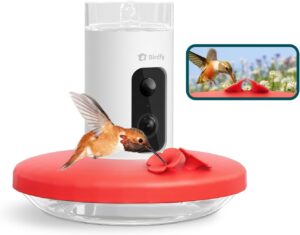
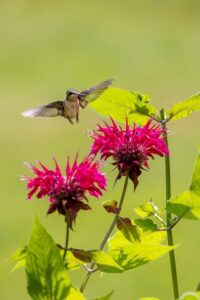
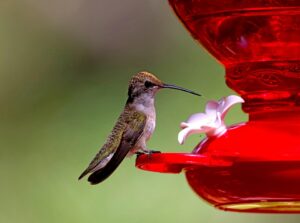 concentration found in natural flower nectar that hummingbirds feed on in the wild.
concentration found in natural flower nectar that hummingbirds feed on in the wild.



